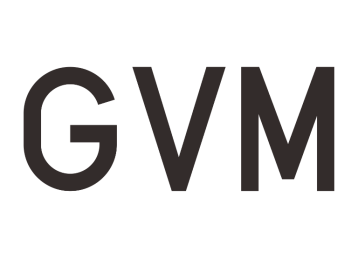Erika Addis. (Photo: Erin Lee)
Erika Addis, head of cinematography at Griffith Film School and Australian Cinematographers Society (ACS) Queensland president and national vice-president, chairs ACS’ Women’s Advisory Panel. She reflects on why cinematography remains male-dominated.
I’m frequently asked ‘Why are there so few women cinematographers?’ I do speculate on the reasons, but the answer is not simple.
Cinematographers need a combination of creativity, technical ability, spatial skills, people skills and stamina – both mental and physical. None of these capacities should be a bar to women entering the camera department on the basis of gender alone. That said, the chronically low rates of women employed as director of photography or camera operator are astonishing.
When I started out in film in 1974, women were excluded from all kinds of workplaces. I didn’t see any other women around in technical roles and it was unusual to be a female in the camera department.
I got my entrée to professional film work from producer Matt Carroll. He’d noticed the lack of women in technical roles and employed me as 3rd electrics on feature The Fourth Wish at the South Australian Film Corporation. I had no prior experience or training in electrics but he instinctively felt I’d be good at it. The following year he employed me as clapper loader on Storm Boy. He wanted things to change and I presented an opportunity for him to make it happen.
It’s well known that locally and internationally young women study in films schools in about equal numbers to men – between 45-55 per cent. That said, data shows 2-4 per cent of USA feature films are shot by women and in Australia, on documentaries, it is around 25 per cent.
When I left film school I paid no attention to statistics like these, because they weren’t collected; they didn’t exist. At the time I was reasonably confident in my abilities as a cinematographer and presuming it was similar for other women, thought there would naturally soon be plenty more coming through the ranks.
In the film business still to this day, personal connections are powerful and arguably more important than what you learn in school. So how come women in cinematography evidently don’t seem to acquire many sufficiently powerful personal connections?
In my case, I could speculate that being raped as a young woman on a film crew affected my willingness to trust the men I worked with. I’m not the only one with this story; it is but one story and I didn’t report it then. I was certain that reporting would directly negatively impact my fledgling career. To the best of my knowledge there are no instances of #MeToo reports in cinematography circles in Australia. But there are hundreds of stories, anecdotal evidence, of harassment, intimidation and belittling that are common, ordinary and everyday events.
It’s a reality for many women that continued employment depends directly upon “sucking it up” and not making the men around them uncomfortable.
In freelancing, there’s little workplace protection because if you displease your boss you just don’t get employed again. It’s simple. Other colleagues up the ranks can also express their opinion, and have influence. All unrecorded, not accountable. This system makes film workers risk-averse and reluctant to stand up for their rights. And the old adages are alive and well. Assertive men are doing their job – well. Assertive women are abrasive, difficult, not nice, etc.
Several government programs have aimed to increase the rates of women in the Australian film industry. In 1975 training workshops for women were funded for the International Year of Women. The Women’s Film Fund began in 1976 as part of the Australian Film Commission. And most recently in 2015 Screen Australia launched Gender Matters in response to the chronically low rates of women engaged in key creative roles.
However, to date, screen agencies are doing little to promote women in below-the-line roles. Gender Matters only tracks women in producer, director, writing and protagonist roles. The argument against including other roles was the “trickledown effect” would boost the numbers of women as heads of departments. In a recent Gender Matters KPI update, Screen Australia highlighted seven female-directed films due for upcoming release: Angel of Mine, Ride Like a Girl, The Nightingale, Babyteeth, Judy and Punch, Animals, and Relic. But of those productions, not one was shot by a woman. There is now a push amongst cinematographers and composers to address this in the criteria of the next Gender Matters KPIs.
In the ACS, the proportion of women in each level of membership tells a story of women’s trajectory in cinematography, from entry level school students through to the highest level of peer recognition, accreditation. It’s a story of attrition and loss.
The proportion of women in membership at each level of the Australian Cinematographers Society.
The ACS acknowledges that the numbers of women in cinematography are low and is supportive of change. The ACS Women’s Advisory Panel was initiated in 2013 to make sure women’s voices are heard in the ACS, and it’s significant that the rate of women attaining ACS Accreditation has picked up in the last five years.
But the figures for women cinematographers are stark, locally and internationally. Recognising there is a problem (for women in all craft roles) is the first step; researching and analysing the data is the second; and making an industry wide effort to make change is the third.
The other front where action is needed is at the individual level. It is clear at ACS Awards how much the men who win are helped by each other. At critical moments they are offered help to break through to a higher level, and in turn they too reach out and create an opportunity for another colleague. Everyone gets further up the ladder of success because they are directly supported and encouraged by a mentor.
I’d like to quote Alan Caso ASC, who in his 2018 Lifetime Achievement acceptance speech, acknowledged his part in upholding the barriers to women and people of colour getting into a career in cinematography.
“…I can’t even imagine what it’s like to try and have a career as a woman, a person of colour, a woman of colour.
“I have sworn to myself that I will spend the remaining years of my career mentoring and kicking some doors in for aspiring cinematographers who don’t look like me. I started this effort last year, and… I won’t be able to do it alone, so I’m appealing to my peers and my colleagues in this room tonight… Let’s not only kick in some doors for members of minority groups, let’s uninstall them for good. Let’s surround ourselves with a crew who looks like the real world. I promise you… There’s room for all of us.”
So, this is not a complete answer to the question why are there so few women cinematographers. But I hope it gives strength to all those who want to be part of the discussion. And to those who, like me, knew they could not speak at the time. It’s time to be heard and valued and included.
This article was originally published in IF Magazine #192.





























